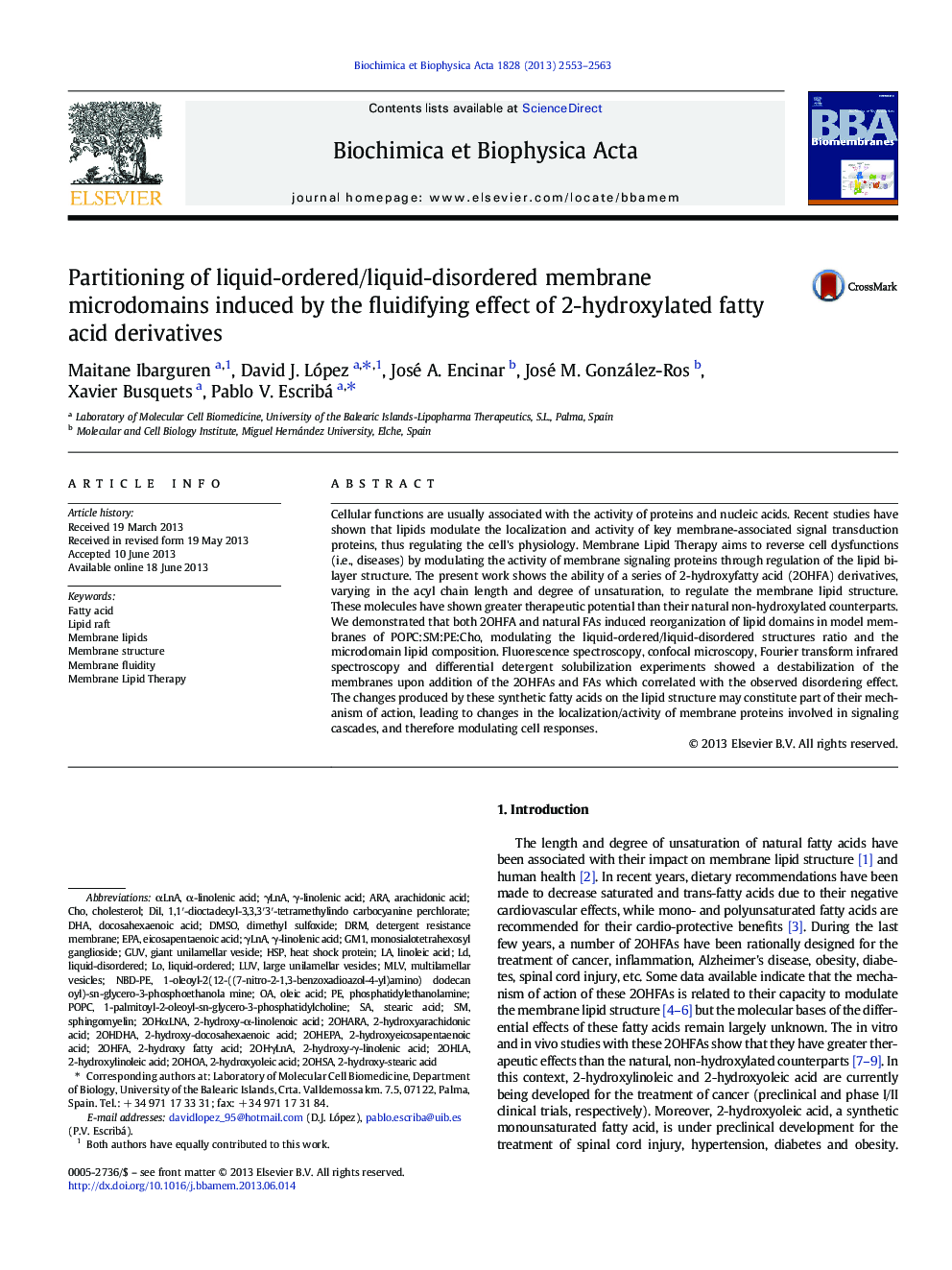| Article ID | Journal | Published Year | Pages | File Type |
|---|---|---|---|---|
| 1944301 | Biochimica et Biophysica Acta (BBA) - Biomembranes | 2013 | 11 Pages |
•2OHFAs have shown therapeutic effects against cancer, hypertension or Alzheimer's disease.•2OHFAs modulate the membrane lipid structure and the proportion of Lo/Ld microdomains.•Both natural and 2-hydrylated FAs exert similar structural effects in lipid membranes.•The low rate of metabolism of 2OHFAs may favor their therapeutic effect compared with natural Fas.•These results explain in part the mechanism of action of 2OHFAs against various diseases.
Cellular functions are usually associated with the activity of proteins and nucleic acids. Recent studies have shown that lipids modulate the localization and activity of key membrane-associated signal transduction proteins, thus regulating the cell's physiology. Membrane Lipid Therapy aims to reverse cell dysfunctions (i.e., diseases) by modulating the activity of membrane signaling proteins through regulation of the lipid bilayer structure. The present work shows the ability of a series of 2-hydroxyfatty acid (2OHFA) derivatives, varying in the acyl chain length and degree of unsaturation, to regulate the membrane lipid structure. These molecules have shown greater therapeutic potential than their natural non-hydroxylated counterparts. We demonstrated that both 2OHFA and natural FAs induced reorganization of lipid domains in model membranes of POPC:SM:PE:Cho, modulating the liquid-ordered/liquid-disordered structures ratio and the microdomain lipid composition. Fluorescence spectroscopy, confocal microscopy, Fourier transform infrared spectroscopy and differential detergent solubilization experiments showed a destabilization of the membranes upon addition of the 2OHFAs and FAs which correlated with the observed disordering effect. The changes produced by these synthetic fatty acids on the lipid structure may constitute part of their mechanism of action, leading to changes in the localization/activity of membrane proteins involved in signaling cascades, and therefore modulating cell responses.
Graphical abstractFigure optionsDownload full-size imageDownload high-quality image (262 K)Download as PowerPoint slide
